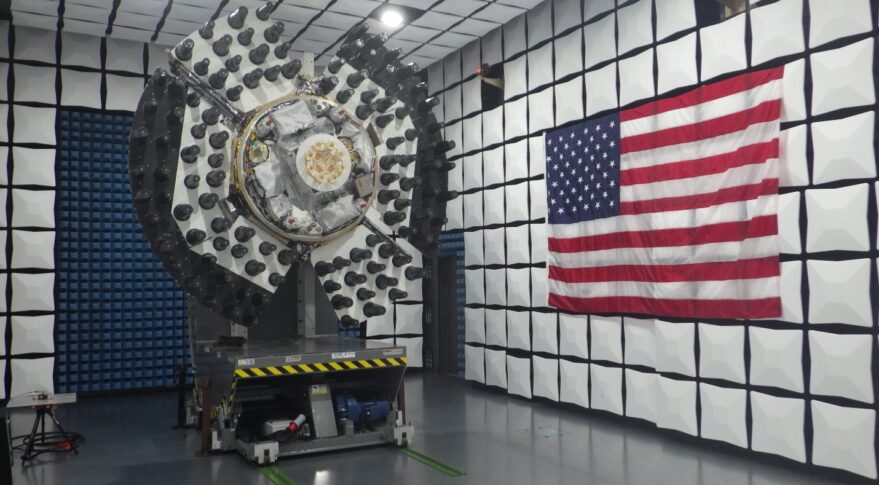
Satellite billed as the ‘future GPS’ begins key tests (Image Credit: Space News)

WASHINGTON — L3Harris announced Jan. 26 it delivered the Navigation Technology Satellite-3 (NTS-3) to the U.S. Air Force and the spacecraft is now undergoing final tests in preparation for a planned launch in late 2023.
NTS-3 is an experiment funded by the Air Force Research Laboratory that will broadcast positioning, navigation and timing (PNT) signals from geostationary Earth orbit. The goal is to demonstrate next-generation PNT technologies for the U.S. military and provide an alternative to GPS.
The satellite is now going through a series of tests at Kirtland Air Force Base, New Mexico, and will soon head to the Air Force’s Benefield Anechoic Facility at Edwards Air Force Base, California, for radio frequency testing.
This will be the first radio frequency tests of the new PNT signals to be demonstrated by NTS-3, AFRL said Jan. 26 in a news release.
The 1,250-kilogram satellite was built by L3Harris under a $84 million contract awarded in 2018 by AFRL. The Air Force plans to launch it on the USSF-106 mission, projected to be the first national security launch by United Launch Alliance’s new Vulcan Centaur rocket.
AFRL and MITRE Corp. developed a reprogrammable software-defined receiver that will allow users to receive both legacy GPS and the new NTS-3 signals. Parsons Corp. is developing the ground system.
Once in orbit, NTS-3 will operate independently of GPS. AFRL said the new signal technology and advanced waveforms will make it more difficult for adversaries to jam or spoof. The Air Force designated it a “Vanguard” program which gives it greater visibility and attention.
L3Harris built NTS-3 on a Northrop Grumman ESPAStar commercial bus. If the experiment is successful, the Air Force may decide to transition some of the NTS-3 payload and signal processing technology to GPS, and might also consider buying more satellites to augment the GPS constellation, which is deployed in medium Earth orbit.
About 20 NTS-3 satellites would be needed to provide global PNT coverage, the Air Force estimated.








